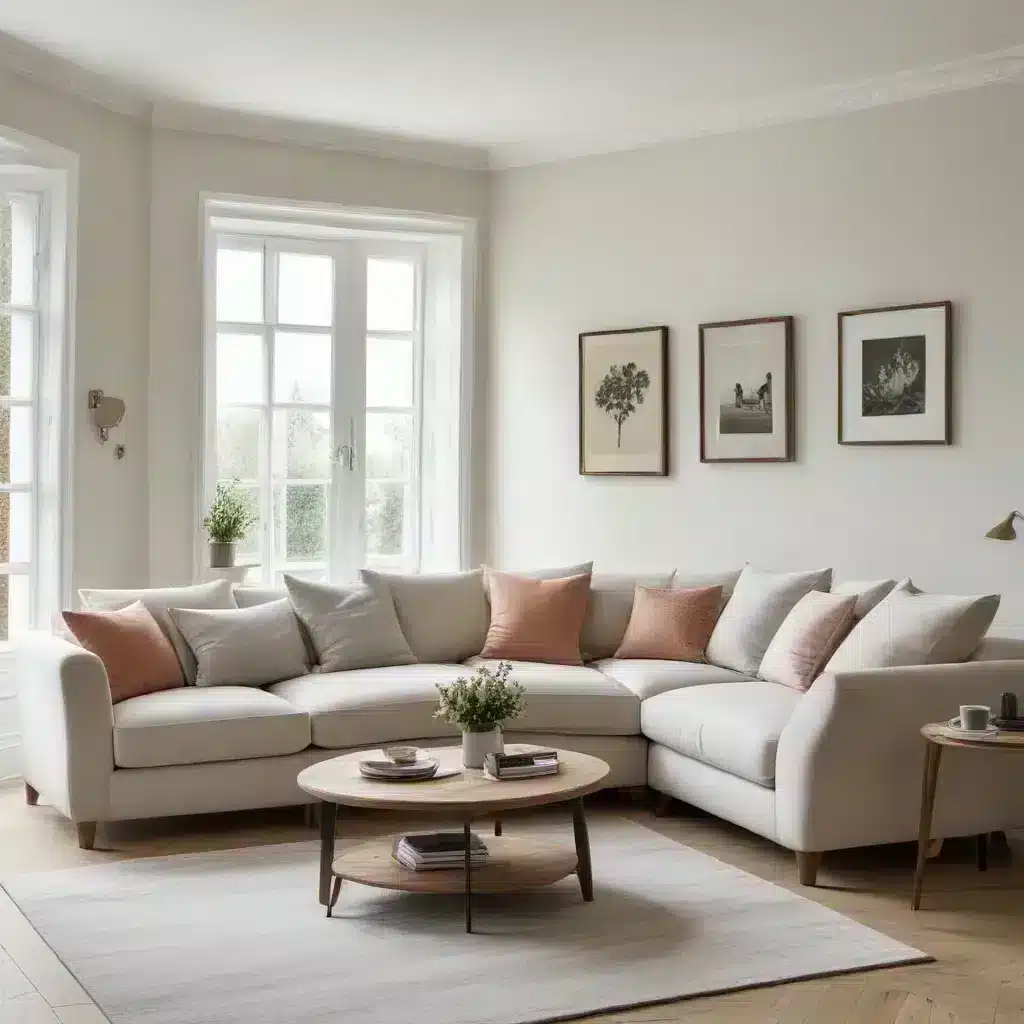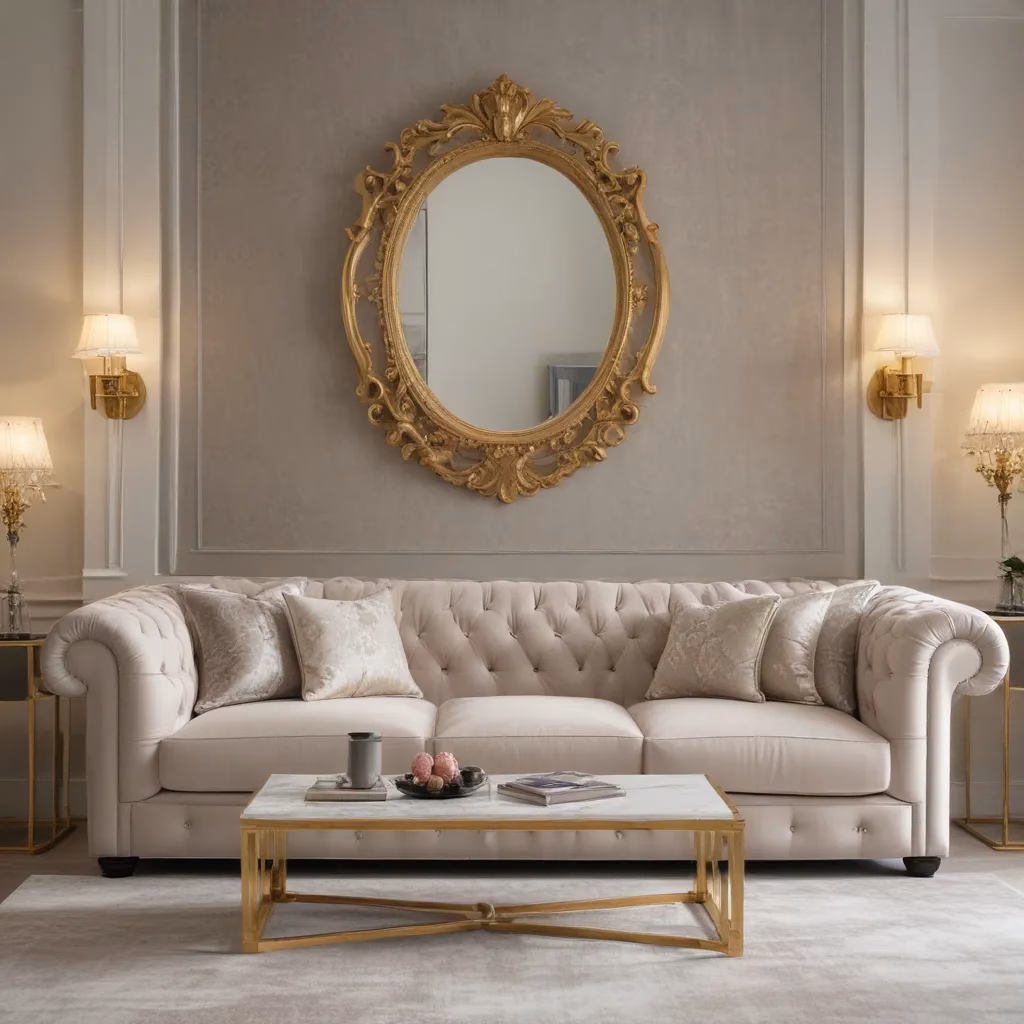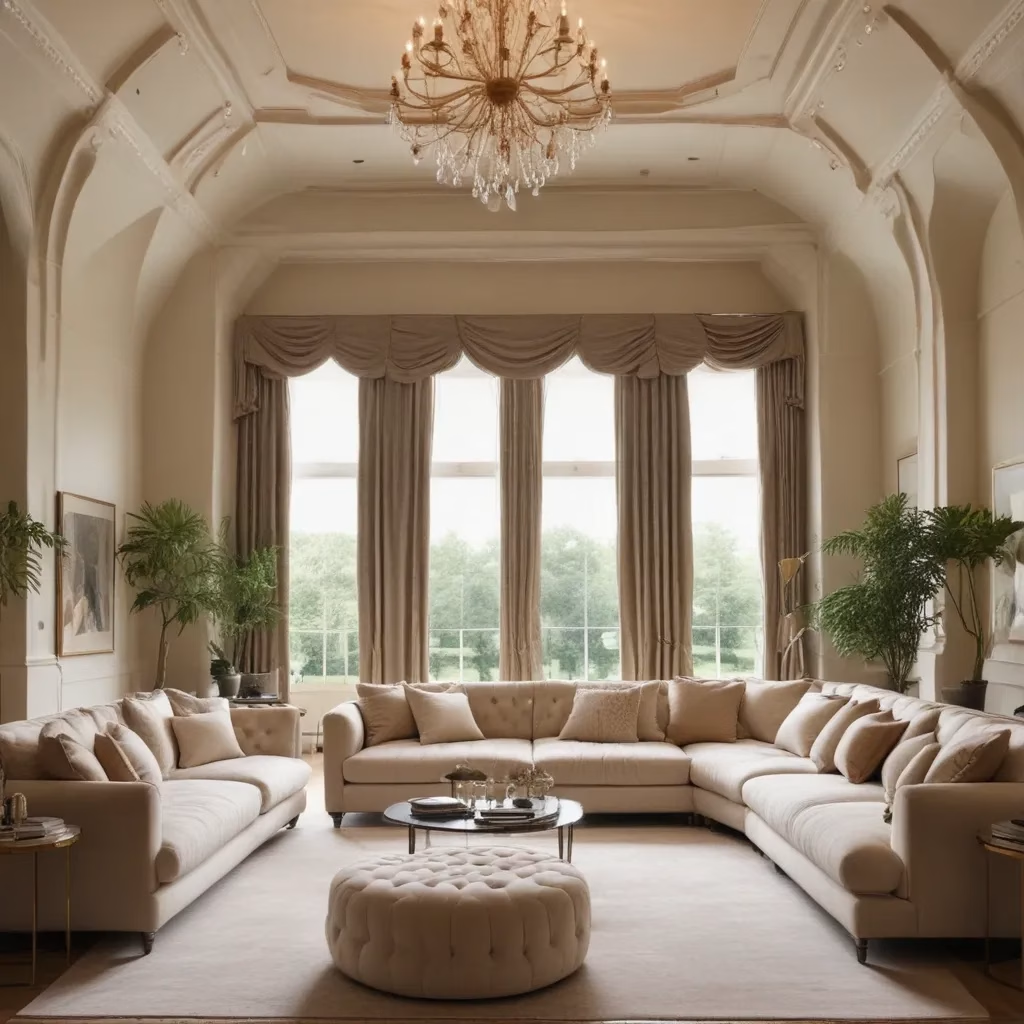
Understanding the Importance of Your Corner Sofa
As a furniture specialist, I’ve seen firsthand how a well-chosen corner sofa can transform a living space. It’s not just a piece of furniture; it’s the heart of your home, where memories are made and life unfolds. When you’re looking to create that perfect living room, selecting the right corner sofa is crucial.
Over the years, I’ve guided countless homeowners through the process of finding their ideal seating solution. What I’ve learned is that a corner sofa isn’t just about filling space—it’s about creating a focal point that balances comfort, style, and functionality. It’s where you’ll curl up with a good book, host movie nights with friends, and perhaps even catch a quick nap on a lazy Sunday afternoon.
The beauty of a corner sofa lies in its versatility. It can define the layout of your room, maximize seating in a compact space, or create a cozy nook in a larger area. But with so many options available, how do you choose the one that’s right for you? That’s where my experience comes in handy. I’m here to share insights that will help you navigate the world of corner sofas and find the perfect fit for your home.
Assessing Your Space: The First Step in Sofa Selection
Before you even start looking at corner sofas, it’s essential to take a good, hard look at your living space. I always tell my clients to grab a tape measure and get to work. You’d be surprised how many times I’ve seen people fall in love with a sofa only to realize it won’t fit through their front door!
Start by measuring your room dimensions. Don’t just focus on where you want the sofa to go—measure doorways, hallways, and any tight corners the sofa will need to navigate during delivery. Remember, a corner sofa comes in sections, which can be both a blessing and a challenge when it comes to installation.
Next, consider the layout of your room. Where are the windows, radiators, and power outlets? You don’t want your new sofa blocking natural light or making it difficult to access essential features of your living space. I once had a client who placed their corner sofa right in front of a radiator—needless to say, they weren’t too happy when winter came around!
It’s also worth thinking about traffic flow. Your corner sofa should enhance the way you move through your space, not hinder it. I always recommend using painter’s tape to mark out the dimensions of potential sofas on your floor. This gives you a real sense of how the piece will fit and how it will affect movement around the room.
The Art of Balancing Comfort and Style
When it comes to corner sofas, finding the sweet spot between comfort and style is key. I’ve seen too many homeowners sacrifice one for the other, only to regret their decision down the line. The good news is, with the right approach, you can have both.
Let’s talk about comfort first. After all, what’s the point of a beautiful sofa if it’s not enjoyable to sit on? When you’re testing out sofas, don’t be shy—really settle in. Kick off your shoes, lean back, and imagine spending hours there. Are the cushions supportive yet soft? Is the back at a comfortable angle? Can you easily get up without feeling like you’re sinking into quicksand?
I always encourage my clients to bring their family along when sofa shopping. What feels comfortable to you might not work for your partner or kids. It’s important to find a piece that suits everyone’s needs.
Now, onto style. Your corner sofa will likely be the largest piece of furniture in your living room, so it needs to set the right tone. Consider the overall aesthetic you’re going for. Are you drawn to sleek, modern lines or more traditional, plush designs? Do you want your sofa to be a statement piece or blend seamlessly with your existing decor?
Color is another crucial factor. While it might be tempting to go for that vibrant teal or rich burgundy, remember that a corner sofa is a long-term investment. I usually recommend opting for neutral tones that can adapt to changing styles and seasons. You can always add pops of color with throw pillows and blankets.
Fabric Choices: Durability Meets Design
Selecting the right fabric for your corner sofa is about more than just aesthetics—it’s about finding a material that can stand up to your lifestyle while still looking great. As someone who’s seen sofas in all states of wear and tear, I can’t stress enough how important this decision is.
Let’s start with durability. If you have kids or pets, you’ll want to look for fabrics that are stain-resistant and easy to clean. I’ve had clients swear by performance fabrics that repel liquids and resist wear. These materials have come a long way in recent years—gone are the days when durable meant stiff and uncomfortable.
For those who prioritize a luxurious feel, natural fibers like cotton and linen can be appealing. They’re soft to the touch and have a beautiful, organic texture. However, be aware that they can be more prone to wrinkling and may not hold up as well to heavy use.
Leather is another option that’s worth considering. It’s incredibly durable and ages beautifully, developing a rich patina over time. Plus, it’s relatively easy to clean—most spills can be wiped away with a damp cloth. The downside? It can be cold to the touch in winter and sticky in summer, so it might not be ideal for all climates.
Synthetic fabrics like polyester and microfiber offer a good balance of durability and comfort. They’re often more affordable than natural fibers and can be engineered to mimic the look and feel of more expensive materials.
When it comes to color and pattern, think long-term. While that bold floral print might catch your eye now, will you still love it in five years? I often advise clients to choose solid colors or subtle patterns for the main body of the sofa and express their personality through accent pillows and throws. This approach gives you more flexibility to change up your decor over time.
Configurability: Adapting to Your Changing Needs
One of the greatest advantages of a corner sofa is its configurability. As your needs change, your sofa can adapt right along with you. I’ve seen families completely transform their living spaces simply by rearranging their corner sofa.
When shopping for a configurable corner sofa, look for models that offer modular pieces. These allow you to add or remove sections as needed. For example, you might start with a simple L-shaped configuration, but later decide to add a chaise lounge or an extra seat.
Consider how you use your space now and how that might change in the future. Do you entertain often? A modular corner sofa can be expanded to accommodate extra guests. Are you planning to start a family? You might want the option to add a larger lounging area for movie nights.
I always tell my clients to think about the different layouts they might want to try. Some corner sofas come with reversible chaise sections, allowing you to switch up the orientation of your seating area without buying a new piece of furniture.
Remember, flexibility is key. Your home should grow and change with you, and your corner sofa is no exception. By choosing a configurable option, you’re investing in a piece that can adapt to your lifestyle for years to come.
The Devil’s in the Details: Features That Matter
When it comes to corner sofas, it’s often the little things that make the biggest difference. I’ve seen clients overlook important features, only to regret it later. So, let’s talk about some details that can significantly enhance your sofa experience.
First up: reclining features. Many corner sofas now come with reclining sections, allowing you to kick back and relax at the touch of a button. If you’re someone who loves to put their feet up after a long day, this feature is worth considering. Just make sure you have enough space for the sofa to fully recline without hitting a wall or coffee table.
Storage is another feature that can be incredibly useful, especially in smaller homes. Some corner sofas come with built-in storage compartments under the seats—perfect for stashing away blankets, magazines, or even kids’ toys. I had a client once who used this feature to hide their extensive DVD collection, keeping their living room clutter-free.
USB ports and power outlets are becoming increasingly common in modern sofas. If you’re someone who likes to work or browse on your devices while lounging, this can be a game-changer. No more stretching across the room to reach an outlet!
Consider the armrests as well. Do you prefer wide, flat armrests that can double as a surface for your coffee mug? Or do you prefer something more streamlined? I’ve even seen sofas with built-in cup holders—a hit with sports fans who don’t want to miss a second of the game.
Lastly, don’t forget about the legs. While they might seem like a minor detail, the style and finish of your sofa’s legs can have a big impact on its overall look. Metal legs can give a modern, sleek appearance, while wooden legs often lend a more traditional or rustic feel.
Making Your Corner Sofa the Star of the Show
Now that you’ve chosen your perfect corner sofa, it’s time to make it shine in your living space. As a furniture specialist, I’ve seen how the right styling can elevate a corner sofa from a simple seating solution to a true centerpiece.
Let’s start with placement. Your corner sofa should anchor the room, creating a natural focal point. I often suggest positioning it to face the main architectural feature of the room—be it a fireplace, a large window with a view, or even a well-placed TV unit. This helps to define the space and create a sense of purpose.
Lighting plays a crucial role in showcasing your sofa. Consider placing a floor lamp at one end of the sofa to create a cozy reading nook. Overhead lighting can cast unflattering shadows, so I recommend using a mix of table lamps and wall sconces to create a warm, inviting atmosphere.
Accessorizing your corner sofa is where you can really let your personality shine. Throw pillows are your best friends here—they add color, texture, and comfort. I like to follow the odd-number rule: group pillows in sets of three or five for a balanced look. Mix and match sizes and patterns for added interest, but try to stick to a cohesive color scheme.
A well-chosen throw blanket can add both style and practicality. Drape it casually over one corner of the sofa for an effortlessly chic look. Not only does it add visual interest, but it’s also perfect for those chilly evenings.
Don’t forget about the space around your sofa. A well-placed side table can provide a convenient spot for drinks, books, or a table lamp. If your sofa doesn’t have a built-in chaise, consider adding an ottoman. It can serve as extra seating when needed and act as a footrest for ultimate relaxation.
Lastly, think about what’s on your walls. The area above your corner sofa is prime real estate for artwork or a gallery wall. Just be mindful of scale—you don’t want your wall decor to overwhelm the sofa or feel disconnected from it.
Maintaining Your Investment: Care Tips for Long-Lasting Beauty
As someone who’s seen countless sofas over the years, I can tell you that proper care and maintenance can make a world of difference in how long your corner sofa stays looking its best. It’s not just about keeping it clean—although that’s certainly important—it’s about preserving the integrity of the materials and construction.
Let’s start with regular cleaning. Vacuuming your sofa weekly is one of the best things you can do to maintain its appearance. Use the upholstery attachment to gently remove dust and debris from the surface and crevices. For leather sofas, a soft, dry cloth can be used instead.
Dealing with spills promptly is crucial. I always tell my clients to keep a clean, white cloth handy for quick blotting. Remember, blot, don’t rub—rubbing can work the stain deeper into the fabric. For tougher stains, consult the manufacturer’s cleaning instructions. Different fabrics require different cleaning methods, and using the wrong one can do more harm than good.
Sunlight can be a silent killer when it comes to sofas. Prolonged exposure can fade fabrics and dry out leather. If your sofa is positioned near a window, consider using sheer curtains or UV-blocking window film to protect it from harsh sunlight.
Rotating cushions regularly can help them wear more evenly. This is especially important for cushions that get more use than others—like that corner spot where you always curl up to watch TV. I suggest flipping and rotating cushions monthly to keep them looking and feeling their best.
For leather sofas, conditioning is key. Use a leather conditioner every six to twelve months to keep the leather supple and prevent cracking. Just be sure to test any product on a small, inconspicuous area first.
Lastly, don’t forget about the frame and legs of your sofa. Tighten any loose screws or bolts periodically, and check for any signs of wear or damage. Catching small issues early can prevent bigger problems down the line.
When to Consider a Replacement: Signs It’s Time for a New Corner Sofa
As much as we’d like our favorite pieces of furniture to last forever, there comes a time when even the best-loved corner sofa needs to be replaced. As someone who’s helped countless clients make this decision, I can tell you it’s not always an easy one. But there are some clear signs that can indicate it’s time for an upgrade.
First, let’s talk about comfort. If you find yourself avoiding your sofa because it’s no longer comfortable, that’s a big red flag. Maybe the cushions have lost their bounce, or the frame has started to sag. A sofa should be inviting—if yours isn’t anymore, it might be time to start shopping.
Visual wear and tear is another factor to consider. Small signs of use can add character, but if your sofa is sporting large stains, tears, or noticeable fading, it might be detracting from your overall decor. I once had a client who kept throwing blankets over their worn-out sofa—at that point, it was clear a replacement was needed.
Consider your lifestyle changes. Perhaps you bought your current sofa when you were single, but now you have a growing family. Or maybe you’ve downsized and your corner sofa is now too large for your new space. Your furniture should adapt to your life, not the other way around.
Squeaks, creaks, and wobbles are never good signs. If your sofa is making noise when you sit down or feels unstable, it could be a safety issue. Don’t ignore these warning signs—they usually indicate structural problems that are often not worth repairing.
Lastly, think about your decor. If your style has evolved but your sofa hasn’t, it might be time for a change. A new corner sofa can completely transform the look and feel of your living space, bringing fresh energy to your home.
Remember, investing in a new corner sofa isn’t just about replacing an old piece of furniture—it’s about creating a comfortable, stylish, and functional living space that you’ll enjoy for years to come. And when you’re ready to make that investment, you know where to find expert advice and a great selection—right here at Sofa Spectacular.
Conclusion: Your Perfect Corner Sofa Awaits
Choosing the perfect corner sofa for your home is a journey—one that combines practical considerations with personal style and comfort preferences. As we’ve explored, there’s a lot to think about, from measuring your space and selecting the right fabric to considering configurability and important features.
Remember, your corner sofa is more than just a piece of furniture. It’s where you’ll relax after a long day, entertain friends and family, and create lasting memories. That’s why it’s so important to take your time and make a choice that truly fits your lifestyle and home.
Whether you’re looking for a sleek, modern design or a cozy, traditional style, the perfect corner sofa is out there waiting for you. And with the right care and maintenance, it will continue to be the heart of your living space for years to come.
So go ahead, take what you’ve learned here and start your search with confidence. Measure your space, consider your needs, and don’t be afraid to test out plenty of options before making your decision. Your dream living room is just a corner sofa away!



